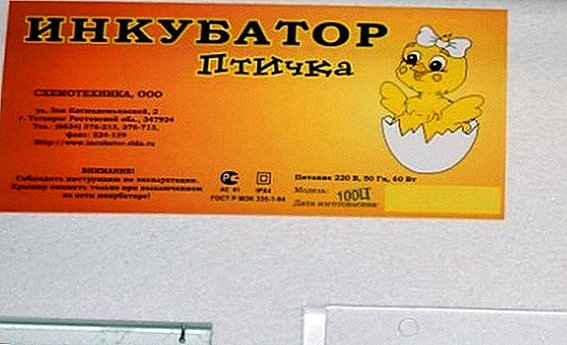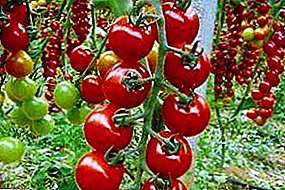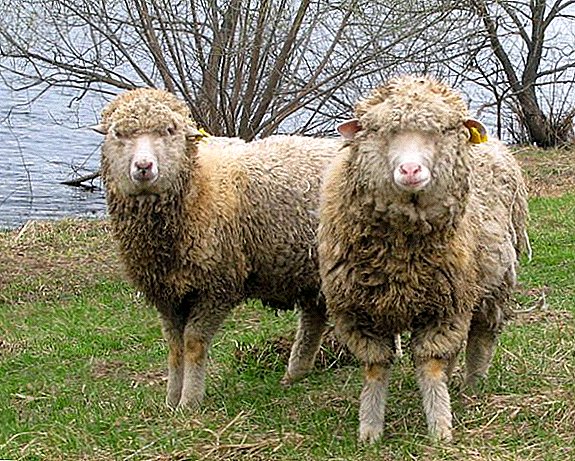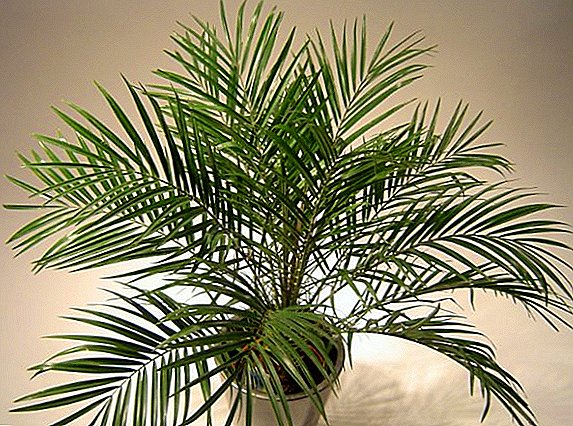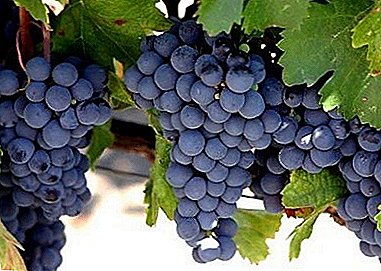
Malbec refers to the technical grape varieties.
His vine with the right approach to cultivation provides excellent material for creating velvety, tightly structured, tannin-rich wines that can compete with more expensive Cabernet or Merlot.
Malbec variety description
For the development of the bushes of this vine are characteristic average strength and good shoot aging.
Leaves:
- round shape, medium size (16x18 cm);
- in the form of a funnel;
- five- and three-lobed;
- reticulate - wrinkled;
- varying degrees of excision.
Leaf plate is smooth, somewhat bubbly, with curved edges down. Cuts the top of the sheet often open, but marked and closed with a rounded bottom.
Less deep cuts of the bottom of the sheet are always open. Excavation at the stem is vaulted or in the form of a lyre, wide open.
The sheet is bordered with small triangular pointed teeth. The lower side of the leaf blade has a mild felt plaque. The leaf stalk is thin, short, pinkish in color.
 Self-fertilization is not good enough, although the flowers are bisexual.
Self-fertilization is not good enough, although the flowers are bisexual.
Moldova, the Count of Monte Cristo and Galben Nou are distinguished by a double-faced color.
Bunches conical, loose or sredneplotnye with an average size of 8x12 cm.
Berries round, dark purple, almost black in color, ranging in size from 14 to 18 mm. The peel has an average strength and density, covered with a pronounced waxy coating. The pulp of berries is fleshy, juicy, melting.
Malbec - early grapes. The time from blooming buds to removable maturity is 140 - 145 days. The buds begin to bloom in the second decade of April.
Early maturation also includes Transformation, Proud and Elegant.
A photo
Check out Malbec grapes in the photo below:





Breeding history
The birthplace of Malbec - southwest France, the Cahors region. This grape variety is also presented under the names Auxerrois, Noir de Presac, Medoc Noir, Quercy, Cat, Cahors. Malbec is the result of hybridization varieties Montpellier and Hayak.
 According to another version, the vine was brought to France from Hungary by the vine grower Malbec.
According to another version, the vine was brought to France from Hungary by the vine grower Malbec.
Originally entered the top five Bordeaux grape varieties, Malbec, however, could not compete with them due to its low frost resistance, climatic demands, unstable yields due to the tendency of flowers to fall, as well as exposure to disease.
In the hot climatic conditions of the countries of South America, where Malbec has been cultivated since the 19th century, the variety proved to be good indicators:
- yield 4-6 tons per hectare;
- fruiting ratio 1.5-1.6 (high);
- acidity to sugar ratio 0,7% / 28%;
Currently Malbec grows in Argentina, USA, Chile, France, Australia, New Zealand. In Russia, this variety is introduced into the standard assortment of agroclimatic subregions IB and IIA Crimea (Alushta, Saki, Evpatoria districts).
Diseases and pests
The most susceptible vine to diseases anthracnose, mildew and gray mold.
Causative agent anthracnose, or smallpox, is an imperfect fungus, not having chlorophyll, incapable of photosynthesis and feeding on organic compounds synthesized by grapes.
The most active disease develops with the onset of the growing season and affects all green parts of the vine.
The harmfulness of smallpox is not only that it can destroy part of the crop and cause oppression of the growth of the vine.
Conductive shoot tissues, being affected by anthracnose, cease to receive nutrients and water to the leaves. This increases the evaporation of water through the affected tissue of the vine.
All this leads to a decrease in frost and drought resistance, which subsequently reduces the productivity of the vine.
 To protect grapes from anthracnose carry out complex agrotechnical measures.
To protect grapes from anthracnose carry out complex agrotechnical measures.
- After dropping the foliage in the fall or spring, before bud breaks, the grapes are sprayed with prophylaxis for prophylactic purposes. DNOC or nitrofen. During the growing season use fungicides:
- 1% Bordeaux liquid;
- 0.4% solutions of homein, polycarbocin, polychomy, mical.
- To reduce the infectious stock of the disease, pruning vines are removed during pruning and burned.
- When preparing vines for seedlings, the affected cuttings are carefully discarded and burned.
- Before storing, the cuttings are disinfected with a solution chinosolbut.
- New vineyards should be laid in elevated areas, avoiding places with shallow groundwater: at high humidity, the stages of the fungus from the state of rest pass to mass sporification and infection of the bushes.
The most dangerous grape disease is mildew, or downy mildew. It is caused by a mushroom that parasitizes only on a vine.
In years with an excess of precipitation, the loss from the destruction of the vineyard by mildew in the absence of protective measures may be more than 50%.
Mildew affects all green grape organs. Disruption of biosynthesis in a plant leads to
- poor ripening of the shoots;
- weakening the vine;
- reduced resistance to low temperatures;
- reduce the sugar content and increase the acidity of the juice.
Protective measures to combat mildew should be carried out in the complex:
- it is best to have a vineyard on the southern slopes with good air ventilation, having rows in the direction of the prevailing winds;
- in time to carry out all activities related to the cultivation of grapes - garter, debris, pasynkovanie, minting, loosening the soil, irrigation, weeding;
- apply foliar nutrition with microelements in 0.01 - 0.02% concentration, apply fertilizers;
- in the summer to spend up to 5 - 7 treatments with fungicides (1% Bordeaux liquid, mical, arceride, polihom, Rydomil), with mandatory cyclic sprays;
- with a length of shoots of 25 - 30 cm;
- before flowering;
- at the end of flowering;
- later - depending on the weather conditions.
During flowering, grapes should not be treated with pesticides, as the drugs are toxic to pollen and adversely affect the set of bunches.
 The reason gray rot is an imperfect fungus-parasite. In conditions of exceeding the norm of precipitation, ripening and ripe berries are particularly exposed, followed by rotting of the clusters.
The reason gray rot is an imperfect fungus-parasite. In conditions of exceeding the norm of precipitation, ripening and ripe berries are particularly exposed, followed by rotting of the clusters.
To reduce the risks of crop loss from rot, you should:
- timely conduct the garter and chasing;
- remove sterile shoots;
- apply spraying fungicides.
To disease oidiumcaused by marsupials, Malbec is fairly stable.
Nor should we neglect preventive measures against bacteriosis, chlorosis, bacterial cancer, rubella.
More than 800 species are known on the vine. animal pests, most of which are insects.
Phylloxera (an insect from the sub-order aphids) - the most dangerous quarantine pest, has root, winged, genital and leaf forms.
All forms of aphids are found on rootstock varieties and some gall-forming varieties of grape hybrids.
Quarantine antifilox actions aimed at deterrence of pest penetration in non-contaminated areas:
- grape planting the material is processed wet (disinfection with HCHs emulsion or suspension)either conducted fumigation using methyl bromide.
- agricultural techniques of root grapes on sandy soils and grafted on other types of soil prevents the defeat of the vines phylloxera.
Wrestling with leaf pest form using insecticides suitable only for queen stock roots. At the same time spraying chemicals is carried out in two stages:
- during the period of bud breakage (against settling individuals);
- when 9-12 leaves appear (against the larvae of the first generation).
With a marked average Malbec resistance to grapevine leafworm still should be sporadically and locally applied protective measures from this pest.
 Spraying the Vineyard with Insecticides (decis, cymbush, sumicidin) and use of biologics (lepidotsid, dendrobatsillin, actofit) gives a good effect during planned treatments:
Spraying the Vineyard with Insecticides (decis, cymbush, sumicidin) and use of biologics (lepidotsid, dendrobatsillin, actofit) gives a good effect during planned treatments:
- at the beginning of the emergence of the first generation of Lypertidae;
- 10 days after the first treatment;
- with the beginning of the emergence of the second generation of caterpillars.
Of mechanical protection grapes from moth recommended collection and destruction of damaged clusters.
Ways of dealing with other types of leafworms, grape and biennial, are the same as against the grapesseed.
Ripening berries Malbec with their thin skin attract wasp.
Smoke bombs, chemical sprays and solutions effective for the destruction of these pests in nests. In order not to impair the future harvest, use traps, containers with holes and bait inside.
Along with industrial-made traps (for example, Wt 202, Argus Garden trap bag), you can use as an affordable and affordable version a regular plastic bottle with a cut off top.
The resulting funnel is inserted into the body, having previously placed a bait on the bottom - products containing protein or carbohydrates (pieces of meat or sweet syrup).
With a small area of a backyard vineyard, you can protect against wasps by covering them "covers" of fine-mesh tissue (tulle, single-layer gauze) with tightly fixed bottom.
The same "covers" can be used as A way to combat bird spitting grapes. As practice shows, birds quickly become accustomed to all kinds of repellents - mirrors, stuffed animals, rattles - and stop responding to them.
A good result for the preservation of grapes from the invasion of birds can also give:
- stretched in 2-3 rows between the wire, to which grapes are tied, fishing line or hard thread;
- Covering bushes with a fine-mesh fishing net or mesh cloth.

Subject to the recommendations for the cultivation of this grape variety, Malbec, despite its some climatic soil whimsicalness, can be used for receiving live wine, with velvety deep taste of fruit shades and bright aroma.
Among the wine varieties are also popular Rkatsiteli, Krasny, Montepulciano and Red Delight.



